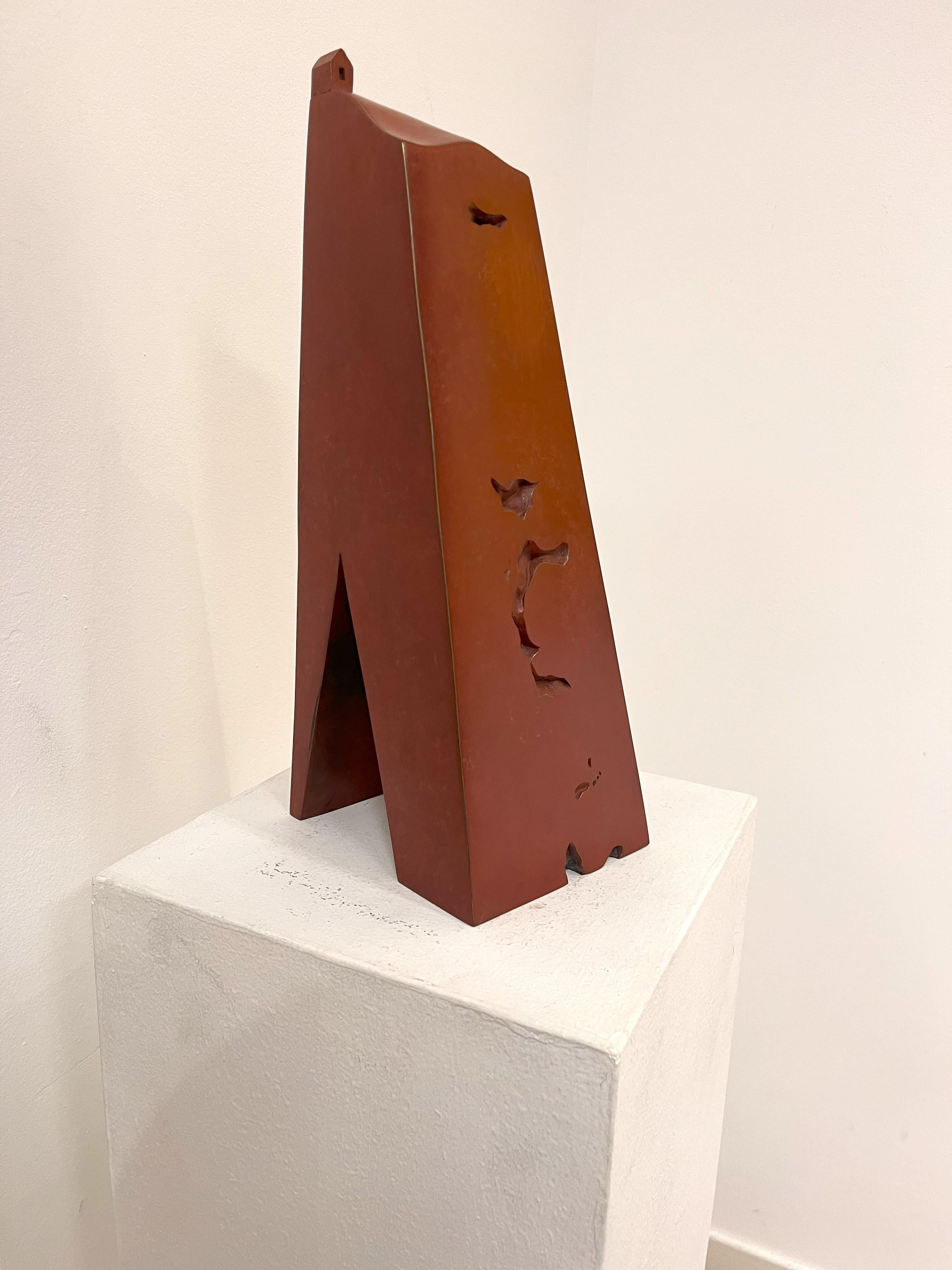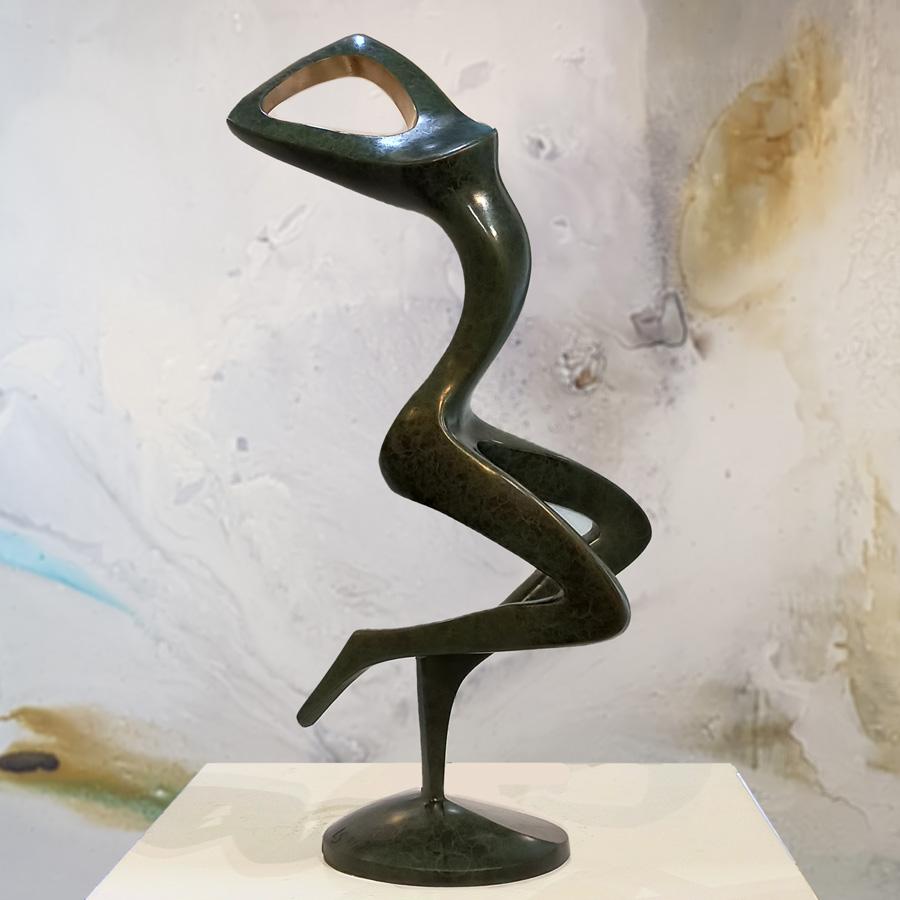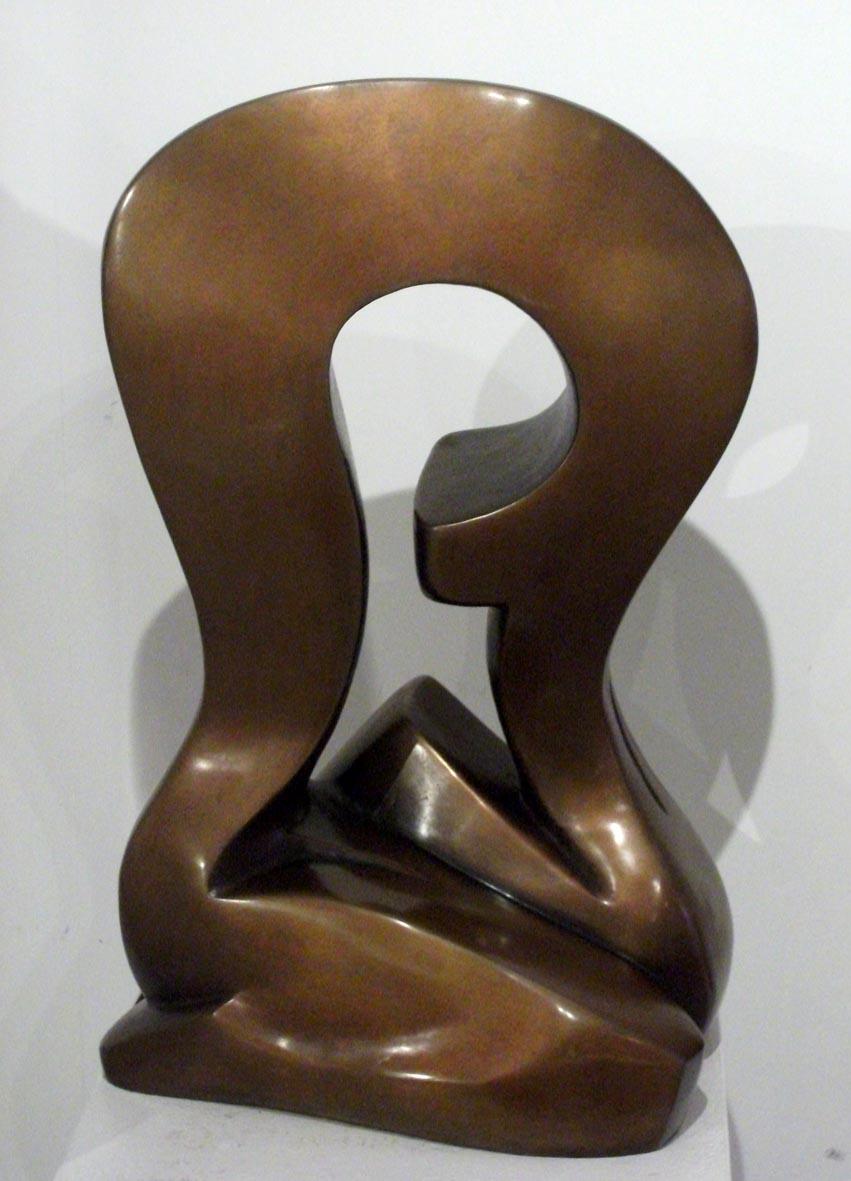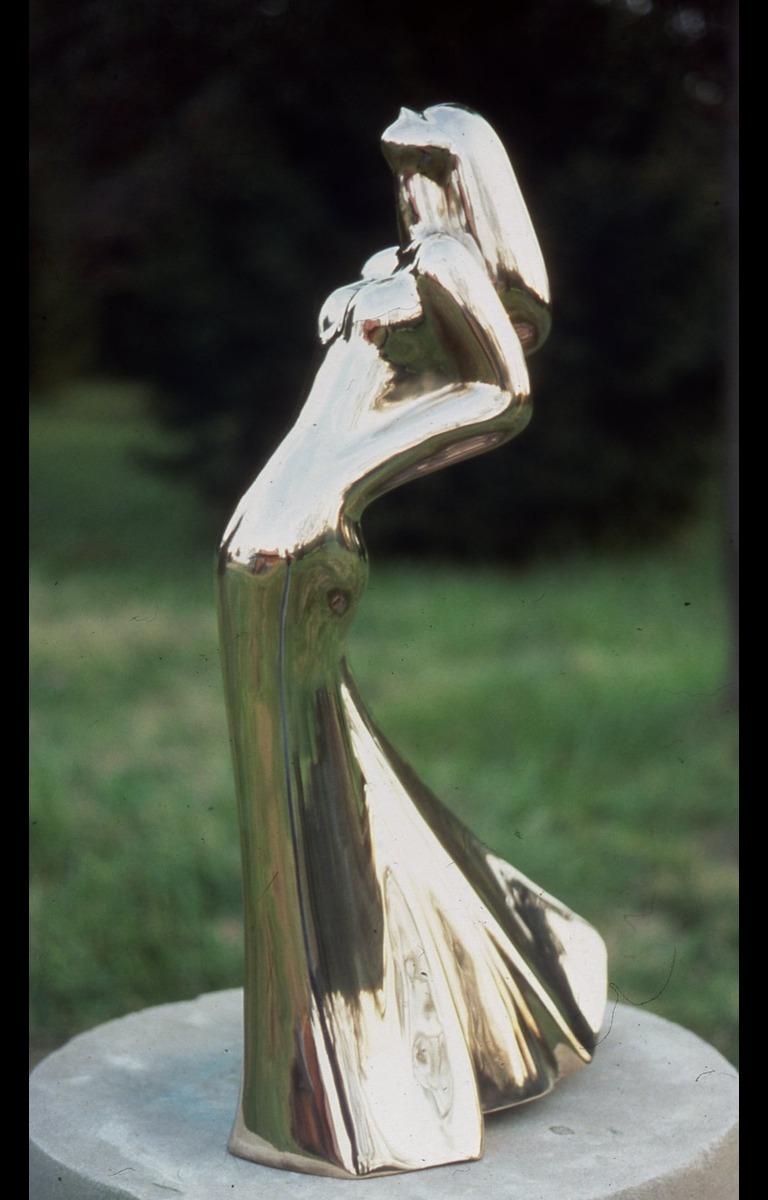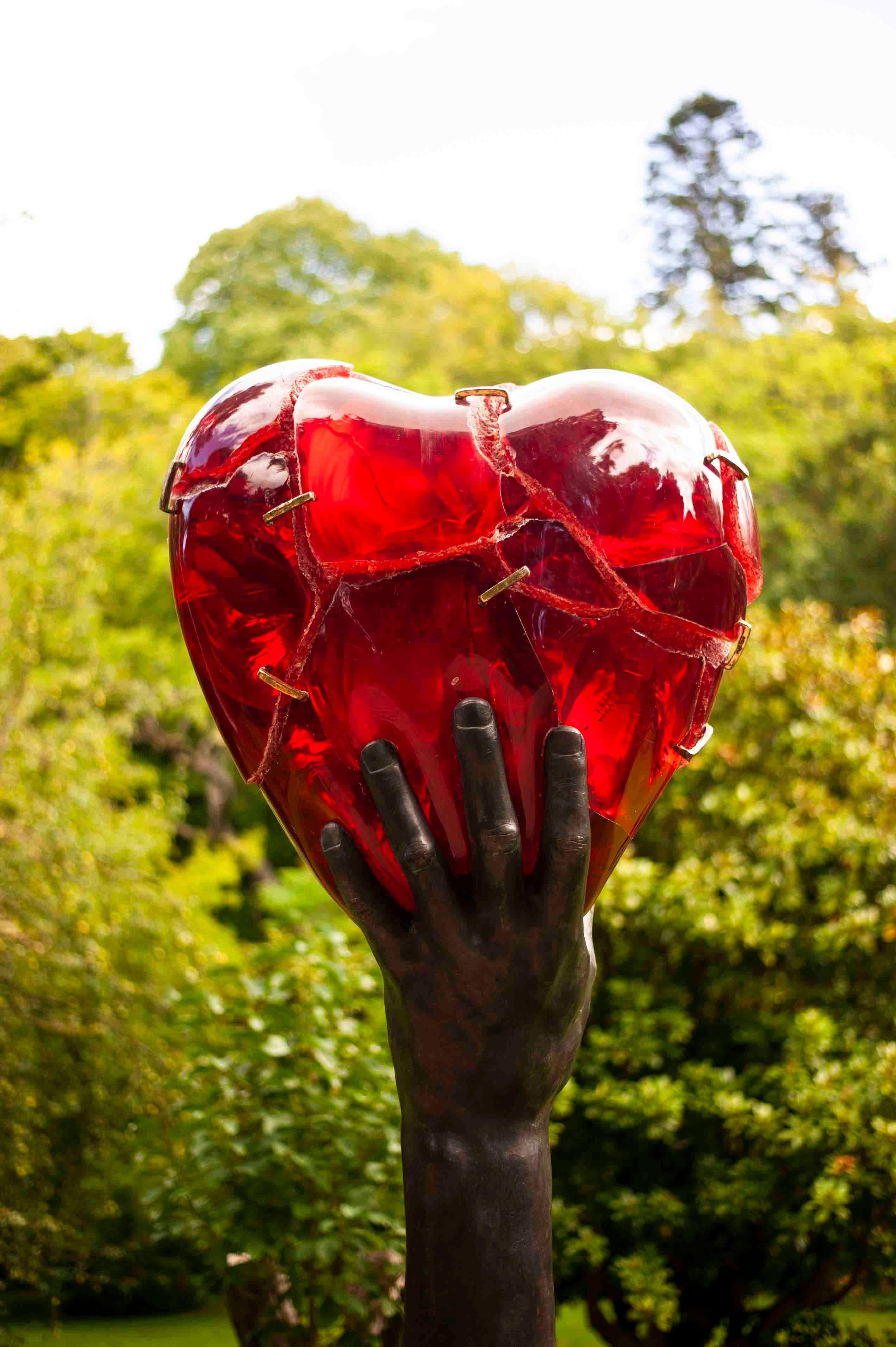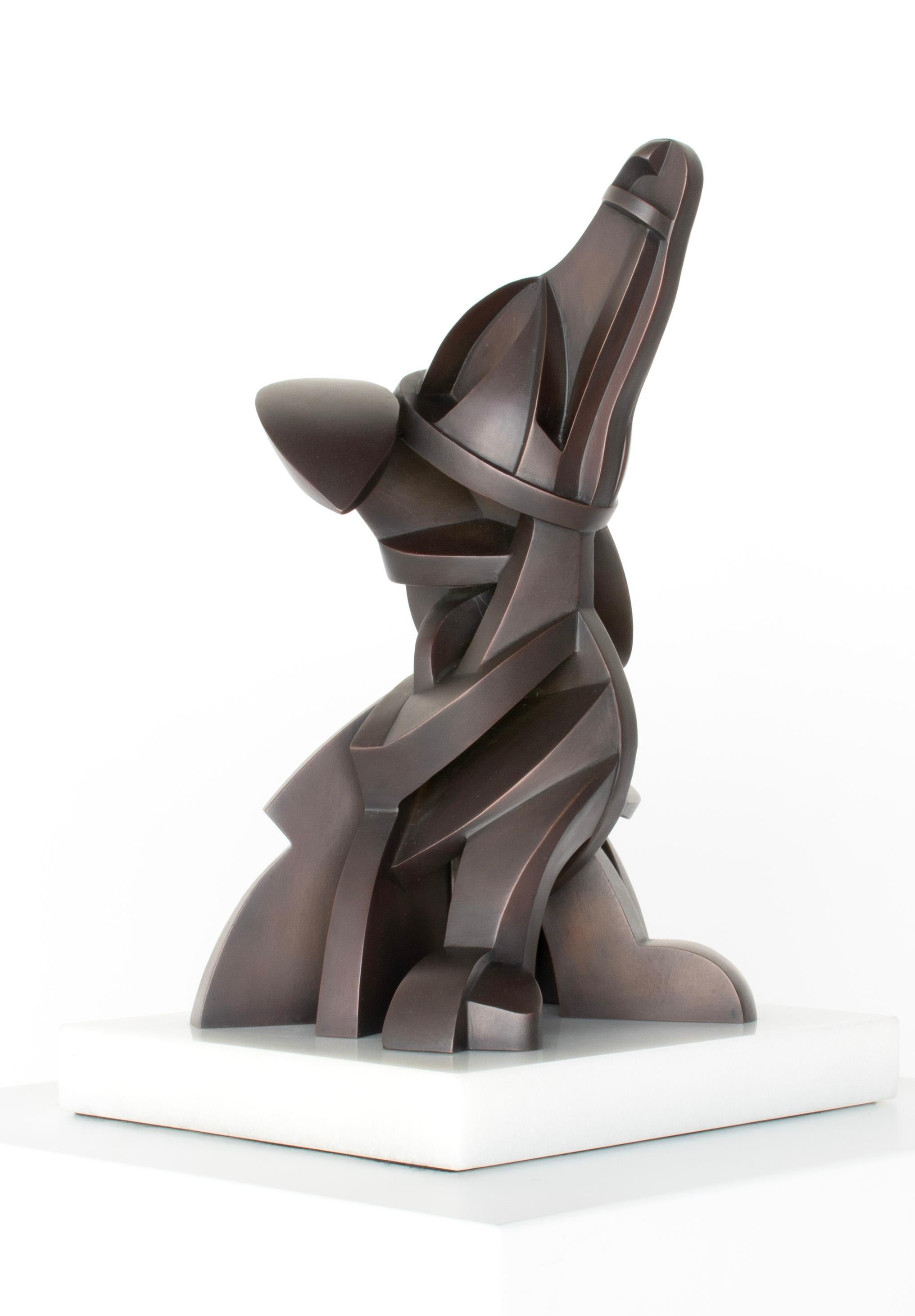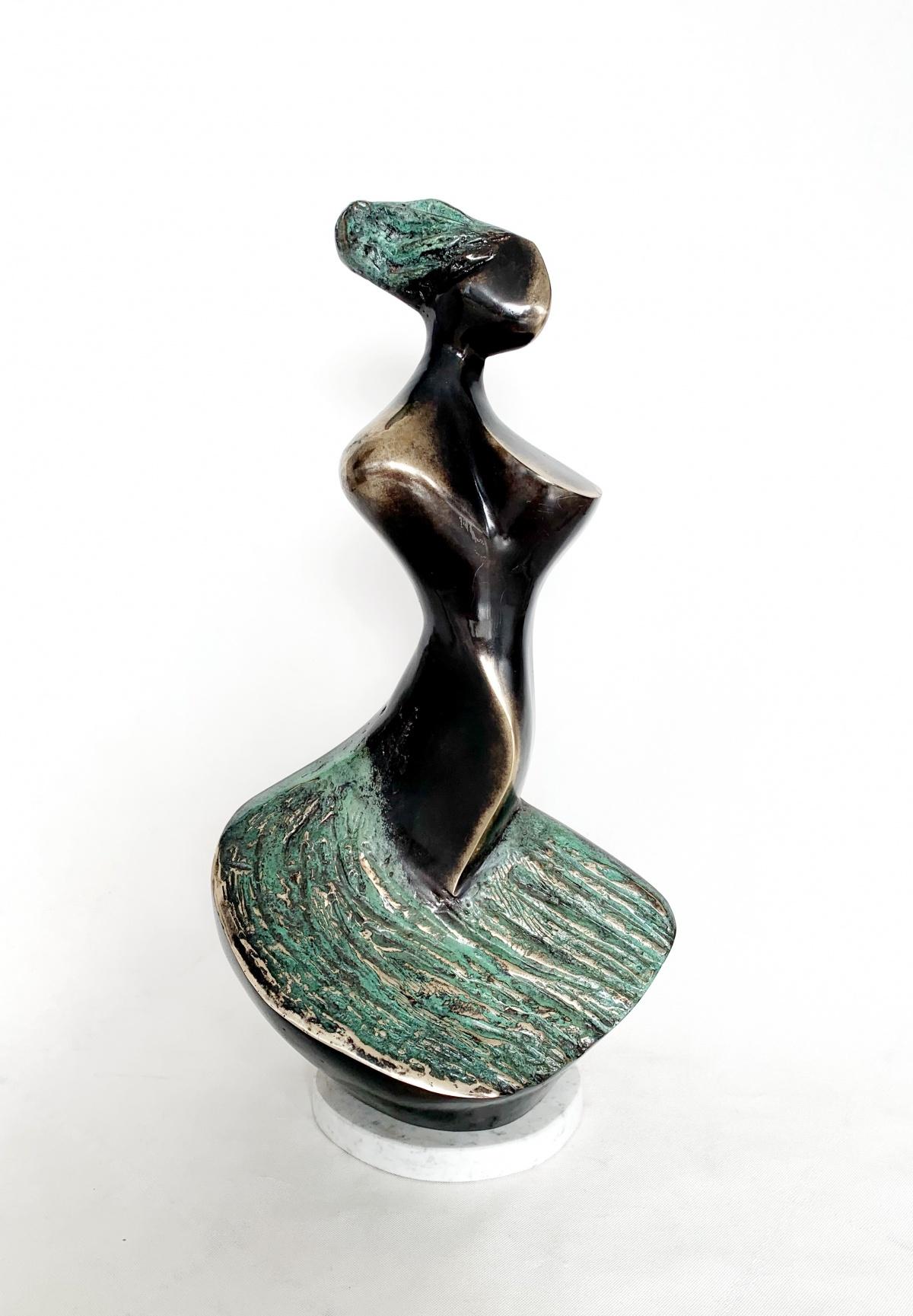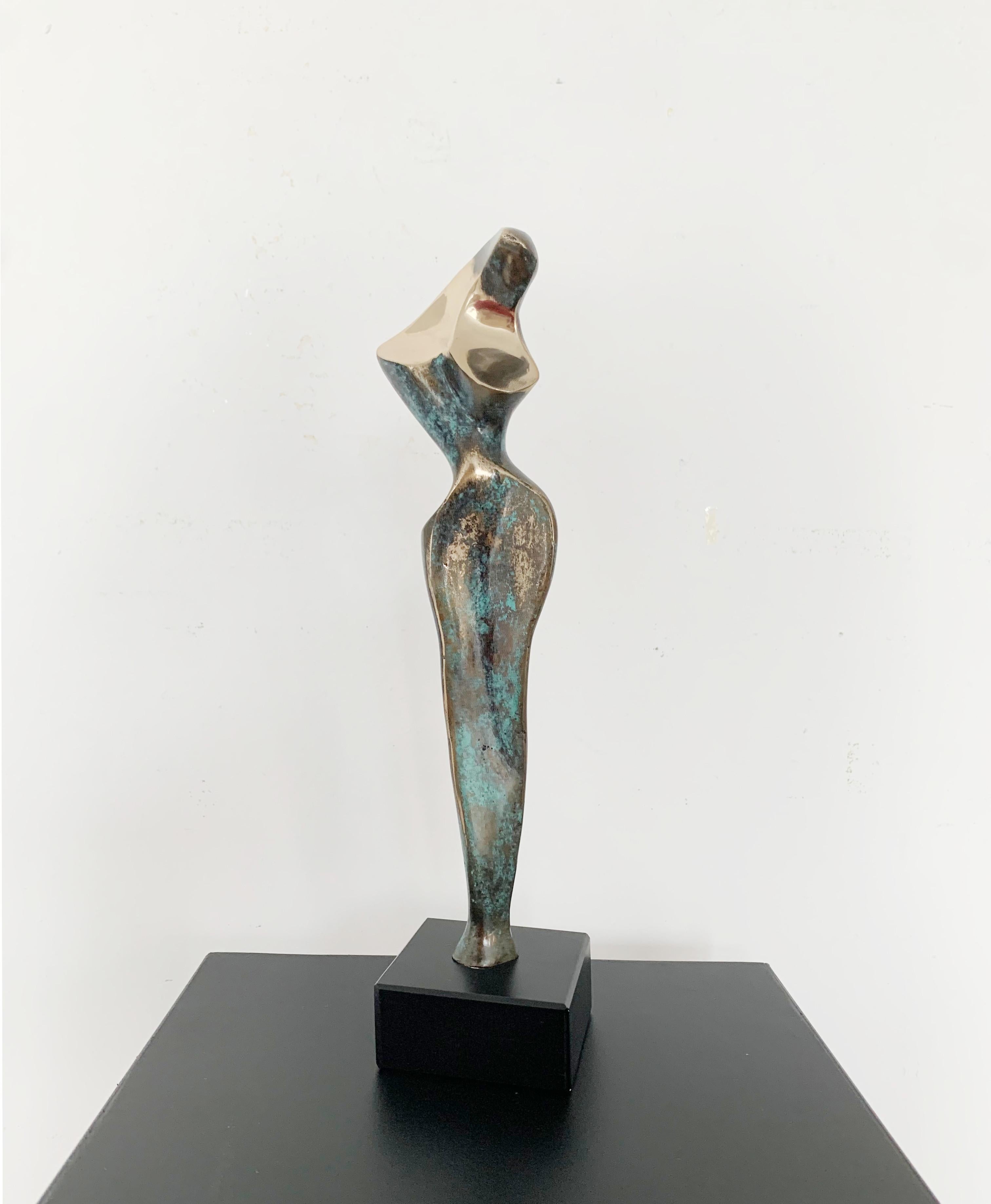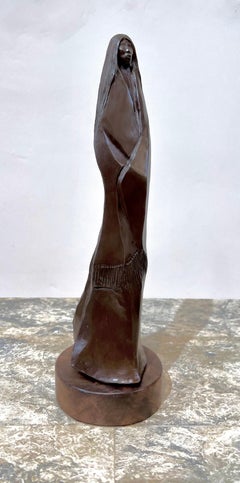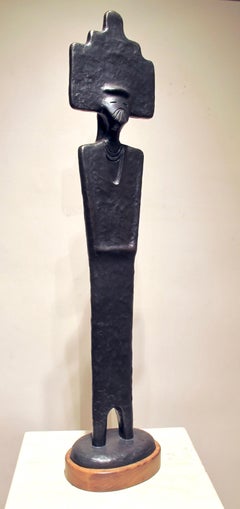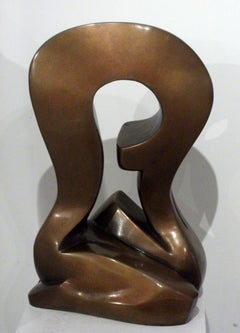
War Pony, Allan Houser, bronze sculpture, running horse, Apache, lifetime casting
View Similar Items
Want more images or videos?
Request additional images or videos from the seller
1 of 5
Allan HouserWar Pony, Allan Houser, bronze sculpture, running horse, Apache, lifetime casting1978
1978
About the Item
- Creator:Allan Houser (1914 - 1994, Native American, Apache)
- Creation Year:1978
- Dimensions:Height: 24 in (60.96 cm)Width: 33 in (83.82 cm)Depth: 7.25 in (18.42 cm)
- Medium:
- Movement & Style:
- Period:
- Condition:limited edition casting 20 life-time cast.
- Gallery Location:Santa Fe, NM
- Reference Number:1stDibs: LU19121739773
About the Seller
5.0
Vetted Seller
These experienced sellers undergo a comprehensive evaluation by our team of in-house experts.
Established in 1966
1stDibs seller since 2015
93 sales on 1stDibs
Typical response time: 2 hours
More From This SellerView All
- San Carlos Girl, bronze, sculpture, by Allan Houser, Apache, woman, brownBy Allan HouserLocated in Santa Fe, NMSan Carlos Girl, bronze, sculpture, by Allan Houser, Apache, woman, brown lifetime casting limited edition Allan Houser (Haozous), Chiricahua Apache 1914-1994 recipient of the National Medal of Arts in 1992. Allan Houser's father Sam, was part of the small band of Apaches who traveled with Geronimo and surrendered in southern Arizona in 1886. Allan's parents were imprisoned with that group in Ft. Sill, Oklahoma. He was the first child to be born in freedom to those Apaches and a fluent speaker of the Chiricahua language. Allan Houser is an important artist because he is of the culture he depicts in his artwork. Allan's parents would tell stories and sing songs recalling the experiences on the warpath. Our gallery represented Allan Houser from 1974 until his passing in 1994 and were investors and provided quality control in the foundry process. Allan Houser's work is in many international collections including the Georges Pompidou Centre, The Smithsonian National Portrait Gallery, and The Dahlem Museum among others. Allan Houser (Haozous), Chiricahua Apache (1914-1994) Selected Collections Centre Georges Pompidou, Paris, France * “They’re Coming”, bronze Dahlem Museum, Berlin, Germany Japanese Royal Collection, Tokyo, Japan “The Eagle”, black marble commissioned by President William J. Clinton United States Mission to the United Nations, New York City, NY *"Offering of the Sacred Pipe”, monumental bronze by Allan Houser © 1979 Presented to the United States Mission to the United Nations as a symbol of World Peace honoring the native people of all tribes in these United States of America on February 27, 1985 by the families of Allan and Anna Marie Houser, George and Thelma Green and Glenn and Sandy Green in New York City. National Portrait Gallery, Smithsonian, Washington, DC * Portrait of Geronimo, bronze National Museum of American Art, Smithsonian, Washington, D.C. * “Buffalo Dance Relief”, Indiana limestone National Museum of the American Indian, Smithsonian, Washington, D.C. *Sacred Rain Arrow, (Originally dedicated at the US Senate Committee on Indian Affairs, US Senate Building) “Goat”, “To The Great Spirit” - dedicated in 1994 at the Vice President’s Residence in Washington, D.C.. The ceremony officiated by Hillary Rodham Clinton and Tipper Gore. Oklahoma State Capitol, Oklahoma City, Ok * “As Long As the Waters Flow”, bronze Gilcrease Museum, Tulsa, OK *Sacred Rain Arrow, bronze Fort Sill, Oklahoma *” Chiricahua Apache Family”, bronze Donated and dedicated to Allan Houser’s parents Sam and Blossom Haozous by Allan Houser and Glenn and Sandy Green The Heard Museum, Phoenix, Arizona *Earth Song, marble donated by Glenn and Sandy Green The Clinton Presidential Library, Arkansas * “May We Have Peace”, bronze The George H.W. Bush Presidential Library, College Station, Texas *"Offering to the Great Spirit", bronze The British Royal Collection, London, England *Princess Anne received "Proud Mother", bronze in Santa Fe Allan Houser’s father Sam Haozous, surrendered at the age of 14 with Geronimo and his band of Warm Springs Chiricahua Apache people in 1886 in Southern Arizona. This was the last active war party in the United States. This group of Apache people was imprisoned for 27 years starting in Fort Marion, Florida and finally living in captivity in Fort Sill, Oklahoma. Allan Houser was born in 1914. His artwork is an ongoing testimony to Native life in America – its beauty, strength and poignancy. Allan Houser is from the culture and portrayed his people in an insightful and authentic way. Because of the era in which he lived, he had a rare understanding of American Indian life. Allan was the first child born after the Chiricahua Apaches were released from 27 years of captivity. Allan grew up speaking the Chiricahua dialect. Allan heard his father’s stories of being on the warpath with Geronimo and almost nightly heard his parents singing traditional Apache music. Allan’s father knew all of Geronimo’s medicine songs. Allan had an early inclination to be artistic. He was exposed to many Apache ceremonial art forms: music, musical instruments, special dress, beadwork, body painting and dynamic dance that are integral aspects of his culture. His neighbors were members of many different tribes who lived in Oklahoma. Allan eagerly gained information about them and their cultures. Allan gathered this information and mentally stored images until he brought them back to life, years later, as a mature artist. Allan Houser was represented by Glenn Green Galleries (formerly known as The Gallery Wall, Inc.) from 1973 until his death in 1994. The gallery served as agents, advocates, and investors during this time. In 1973 the Greens responded enthusiastically to the abstraction and creativity in Houser’s work. They were impressed, not only with his versatility and talent but with the number of mediums he employed. His subject matter was portrayed in styles ranging from realism, stylized form to abstraction. With encouragement from the Greens, Houser at the age of 61, retired from his post as the head of the sculpture department at the Institute of American Indian Arts in Santa Fe, New Mexico in 1975 to begin working full-time creating his art. The next 20-year period was an exciting time for Allan, the gallery, and for the Green family. He created a large body of sculpture in stone, wood and bronze. For many years Glenn Green Galleries co-sponsored many editions of his bronzes and acted as quality control for the bronze sculptures according to Houser’s wishes. As both agents and gallery representatives, the Greens promoted and sold his art in their galleries in Phoenix and Scottsdale, Arizona and in Santa Fe, New Mexico. They had bi-annual exhibits in their galleries to feature Houser’s newest work and sponsored and arranged international museum shows in America, Europe and Asia. They travelled for these events including a trip to Carrara, Italy to the famed quarries of Michelangelo and together co-financed and arranged the purchase of 20 tons of marble. A watershed event for Allan Houser’s career occurred in the early 1980’s when Glenn Green Galleries arranged with the US Information Agency a touring exhibit of his sculpture through Europe. This series of exhibits drew record attendance for these museums and exposed Houser’s work to an enthusiastic art audience. This resulted in changing the perception of contemporary Native art in the United States where Houser and Glenn Green Galleries initially faced resistance from institutions who wanted to categorize him in a regional way. The credits from the European exhibits helped open doors and minds of the mainstream art community in the United States and beyond. Senator Daniel Inouye of Hawaii was a supporter of Allan Houser’s artwork. We worked with Senator Inouye on many occasions hosting events at our gallery and in Washington D.C in support of the formation of the Smithsonian’s National Museum of the American Indian in Washington, D.C. and other causes supporting Native Americans. Allan Houser is shown below presenting his sculpture “Swift Messenger” to Senator Inouye in Washington, D.C.. This sculpture was eventually given to the National Museum of the American Indian, Smithsonian’s permanent collection. It is now currently on loan and on display in the Oval Office. President Biden’s selection of artwork continues our gallery’s and Allan’s connection to the White House from our time working with Allan Houser from 1974 until his passing in 1994. “It was important for President Biden to walk into an Oval that looked like America and started to show the landscape of who he is going to be as president,” Ashley Williams...Category
1970s Contemporary Figurative Sculptures
MaterialsBronze
- Hesot Kachin Mana, by Dan Namingha, bronze, kachina, Hopi, brown, sculptureBy Dan NaminghaLocated in Santa Fe, NMHesot Kachin Mana, by Dan Namingha, bronze, kachina, Hop,i brown, sculpture #1/18 bronze edition signed and numbered by the artist We present paintings, prints, and sculptures by Sou...Category
1980s Contemporary Abstract Sculptures
MaterialsBronze
- Fred W. Begaye Gives Tours of His Homeland, bronze dog sculpture, Navajo, blueBy Melanie YazzieLocated in Santa Fe, NMFred W. Begaye Gives Tours of His Homeland, bronze dog sculpture, Navajo, blue The next sculpture in the edition is on order from the foundry. Contact the gallery for delivery time.Category
1990s Contemporary Figurative Sculptures
MaterialsBronze
- Henge, sculpture by Kerry Green, copper, bronze, abstract, figures, metal sculptBy Kerry GreenLocated in Santa Fe, NMHenge, sculpture by Kerry Green, copper, bronze, abstract, figures, metal sculpture Since childhood, Kerry Green has always been creative; painting, drawing, sculpting, and sewing. Her family provided her with materials and encouraged her efforts. She literally grew up in her parents’ art galleries, and with them toured the U.S., Europe, Mexico, Japan, and New Zealand, seeing museums and visiting artists’ studios. Growing up in Arizona and New Mexico gave her the opportunity to explore the Native reservations there where she has made life-long friendships. Several of her very early influences were Dr. Harry Wood...Category
2010s Contemporary Abstract Sculptures
MaterialsBronze, Copper
- My Angel (Mi Angel), Eduardo Oropeza, bronze, sculpture, antique silver, patinaBy Eduardo OropezaLocated in Santa Fe, NMMy Angel (Mi Angel), Eduardo Oropeza, bronze, sculpture, antique silver, patina Sculptor, painter, printmaker, & photographer, Eduardo Oropeza remains a commanding presence in conte...Category
1990s Contemporary Figurative Sculptures
MaterialsBronze
- E Tu (Stand Tall), contemporary Maori sculpture, green patina, warrior figureBy Wi TaepaLocated in Santa Fe, NME Tu (Stand Tall), contemporary Maori sculpture, green patina, warrior figure Wi Te Tau Pirika Taepa (born 1946, in Wellington) is a New Zealand ceram...Category
Early 2000s Contemporary Figurative Sculptures
MaterialsBronze
You May Also Like
- Paesaggio del cuoreLocated in Milano, MIKyoji Nagatani was born in Tokyo in 1950. He graduated from the University of the Arts in Tokyo and the Higher Institute of Research at the State University of Fine Arts in the Japan...Category
2010s Contemporary Abstract Sculptures
MaterialsBronze
- Baby, Bronze Sculpture with Patina, Ed 1/10Located in WOOLLAHRA, AULarissa was born in Belogorsk, a small town in Russia and later moved to The Russian FarEast where she spent her early childhood. Her family moved to Moldova and finally settled in D...Category
2010s Contemporary Figurative Sculptures
MaterialsBronze
- Dancer Movement #1, Bronze Sculpture with Patina, Ed 1/10Located in WOOLLAHRA, AULarissa was born in Belogorsk, a small town in Russia and later moved to The Russian FarEast where she spent her early childhood. Her family moved to Moldova and finally settled in D...Category
2010s Contemporary Figurative Sculptures
MaterialsBronze
- Dancer Movement #1, Bronze Sculpture with Patina, Ed 1/10Located in WOOLLAHRA, AULarissa was born in Belogorsk, a small town in Russia and later moved to The Russian FarEast where she spent her early childhood. Her family moved to Moldova and finally settled in Dushanbe, capital of Tajikistan. At 19 Larissa went off on her own to study art in St Petersburg ( Leningrad ). “Larissa began sculpting in kindergarten from doughy black bread, the only material she could get her hands on. It was just after the war. Russia was still recovering from hard times. Despite the pain from hunger in her tummy, my sister would eat only the breads crust. From the doughy insides, she sculpted a dog, a cat, a tree, but mostly she sculpted the portraits of family members and they were quite recognisable. When Larissa was 12 years old, her artwork won a national competition for children. The picture depicted children of many nationalities dancing together and was chosen to be made into a national post stamp. The organisers of this competition came from Moscow and were determined to make sure that nobody had helped my sister. They couldn’t believe that little girl can draw like that” -Yakov Smagarinsky (brother) At 14 Larissa went to the Art College to study painting, drawing, sculpture, ceramics, perspective, geometry and literature in Dushanbe Art College where she obtained her diploma. Later she continued her education in St Petersburg where she received a Master Degree in architectural, decorative and monumental sculpture. Her first commissioned sculptures were carved oak based on Russian folklore...Category
2010s Contemporary Figurative Sculptures
MaterialsBronze
- Dancer Movement #3, Bronze Sculpture with Patina, Ed 3/10Located in WOOLLAHRA, AULarissa was born in Belogorsk, a small town in Russia and later moved to The Russian FarEast where she spent her early childhood. Her family moved to Moldova and finally settled in D...Category
2010s Contemporary Figurative Sculptures
MaterialsBronze
- Baby, Bronze Sculpture with Patina, Ed 1/10Located in WOOLLAHRA, AULarissa was born in Belogorsk, a small town in Russia and later moved to The Russian FarEast where she spent her early childhood. Her family moved to Moldova and finally settled in D...Category
2010s Contemporary Figurative Sculptures
MaterialsBronze
Recently Viewed
View AllMore Ways To Browse
Used House Speakers
Retro Hawaiian Dresses
Retro Hawaiian Dress
Vintage Wood Speaker
Medicine Bronze
Princess Anne
Native American Head Dress
Indian Marble Sculpture
Royal Hawaiian
George W Drew
Indian Head Dress
Bronze Goat Head
Marble Horse Large
Vintage Hawaiian Santa
1970 Speakers
Hawaii Dancer
Large Goat Sculpture
Apache Vintage
